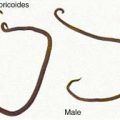Chapter 606 Toxic Neuropathies
Many chemicals (organophosphates), toxins, and drugs can cause peripheral neuropathy (Table 606-1). Heavy metals are well-known neurotoxins. Lead poisoning, especially if chronic, causes mainly a motor neuropathy selectively involving large nerves, such as the common peroneal, radial, and median nerves, a condition known as mononeuritis multiplex (Chapter 702). Arsenic produces painful burning paresthesias and motor polyneuropathy. Exposure to industrial and agricultural chemicals is a less common cause of toxic neuropathy in children than in adults, but insecticides are neurotoxins for both insects and humans, and if they are used as sprays in closed spaces, they may be inhaled and induce lethargy, vomiting, seizures, and neuropathy, particularly with recurrent or long-term exposure. Working adolescents and children in developing countries are also at risk. Puffer fish poisoning, usually by ingestion of even cooked fish meat contaminated with the venom, produces a Guillain-Barré–like syndrome.
Table 606-1 TOXIC AND METABOLIC NEUROPATHIES
METALS
OCCUPATIONAL OR INDUSTRIAL CHEMICALS
DRUGS
METABOLIC DISORDERS
Biologic neurotoxins are associated with tick paralysis, diphtheria, botulism, and the variants of paralytic shellfish poisoning. Lyme disease, West Nile virus, leprosy, herpes viruses (Bell palsy), and rabies also produce peripheral nerve– or ventral horn cell–induced weakness or paralysis. Various inborn errors of metabolism are also associated with peripheral neuropathy from metabolite toxicity or deficiencies (Part XI and Table 606-1).






